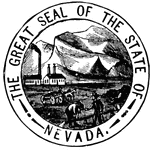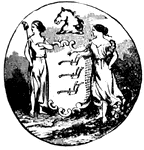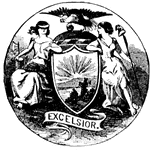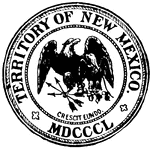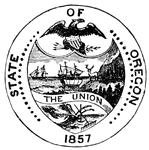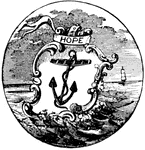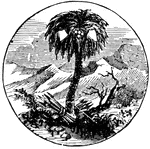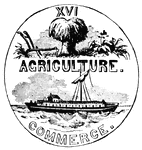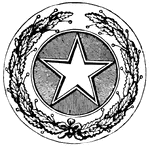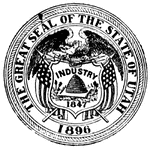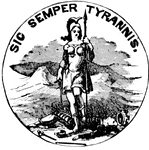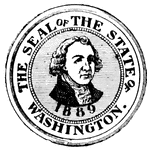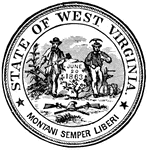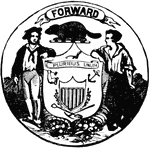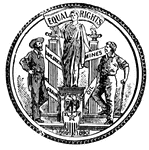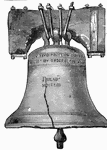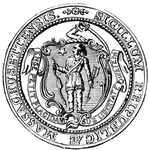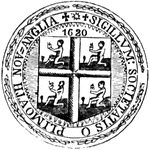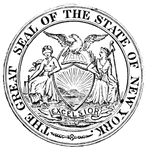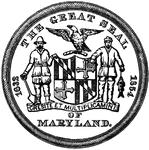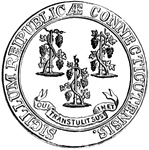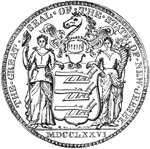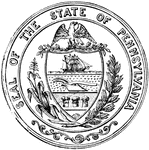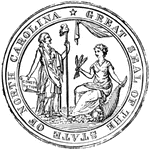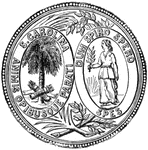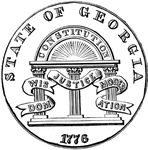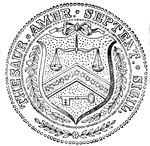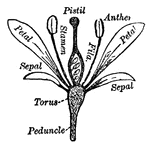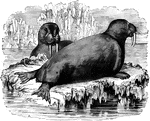
Pennsylvania Seal
Seal of the commonwealth of Pennsylvania, 1904. Motto: Virtue, Liberty, Independence.

Seal
The seal is an aquatic mammal, whose limbs are formed into flippers. The tail tapers at the end of the…

Solomon's Seal Root
In some perennial herbs, prostrate stems or branches underground are thickened with this store of nourishment…
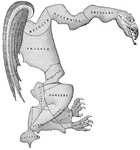
The Gerrymander
Political cartoon of unfairly redrawn congressional districts, origin of the term "gerrymander".
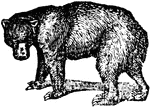
Black Bear
The Black bear inhabits every wooded district in North America, and eats primarily vegetation.
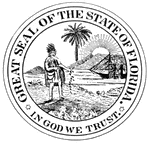
Florida Seal
The former Great Seal of Florida, featuring an indian, palm tree, the sun, and some uncharacteristic…

Camp Princeton
"New Jersey Camp at Arling, Va., designated as Camp Princeton in honor of one of the Revolutionary battle…

General George Crook
"General Crook, born near Dayton, O., September 8th, 1828, died in Chicago, Ill., March 21st, 1890,…
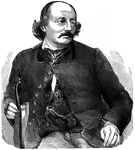
General Benjamin F. Butler
"General Butler was born in Deerfield, N. H., November 6th, 1818. At the time of President Lincoln's…
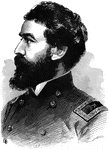
General John M. Brannan
"General Brannan, born in the District of Columbia in 1819, was graduated from the United States Military…

Common Seal
"The ground-color of the hair or skin, when this animal is alive and dry, is pale whitish-gray, with…
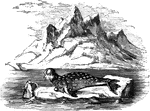
Hooded Seal
"Also called the Crested Seal, remarkable for possessing, about two inches from te extremity of the…
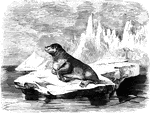
Sea Bear
"It is the size of a large bear; girth at the sholder, five feet, near the tail, twenty inches; fur…

General George H. Sharpe
"General Sharpe, born in Kingston, N. Y., February 26th, 1828, was graduated at Rutgers in 1847; studied…
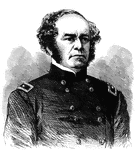
General Henry W. Benham
"General Benham, born in Connecticut in 1817, died in New York June 1st, 1884, was graduated from the…
!["Presentation of colors to the Twentieth United States [African American] Infantry, Colonel Bartram, at the Union League Clubhouse, New York, March 5th, 1864. The Twentieth Regiment, United States [African American] Troops, left Riker's Island at nine o'clock on the 5th of March, 1864, on board the steamer <em>John Romer</em>, and were conveyed to the foot of Twenty-first Street, East River, New York, where they were disembarked and formed in regimental line, and marched to Union Square, arriving in front of the Union League Clubhouse at one o'clock. A vast crowd of citizens, of every shade of color and every phase of social and political life, filled the square and streets, and every door, window, veranda, tree and housetop that commanded a view of the scene was peopled with spectators. Over the entrance of the clubhouse was a large platform, ornamented with flags and filled with ladies. In the street was another platform, tastefully decorated and occupied by prominent citizens. From the stand the colors were presented by President King of Columbia College, who addressed them with warmth and eloquence. After the presentation ceremony was over the men stacked arms and partook of a collation provided for them."— Frank Leslie, 1896](https://etc.usf.edu/clipart/11700/11749/presentcolor_11749_mth.gif)
Presentation of Colors
"Presentation of colors to the Twentieth United States [African American] Infantry, Colonel Bartram,…
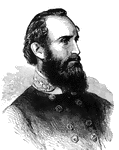
General Thomas J. Jackson
"General Stonewall Jackson, born in Clarkesburg, W. Va., January 21st, 1824, died at Chancellorsville,…

War in Georgia
"The war in Georgia- Stevenson, Ala., depot for General Rosecrans's Army. The campaign of General Rosecrans…
